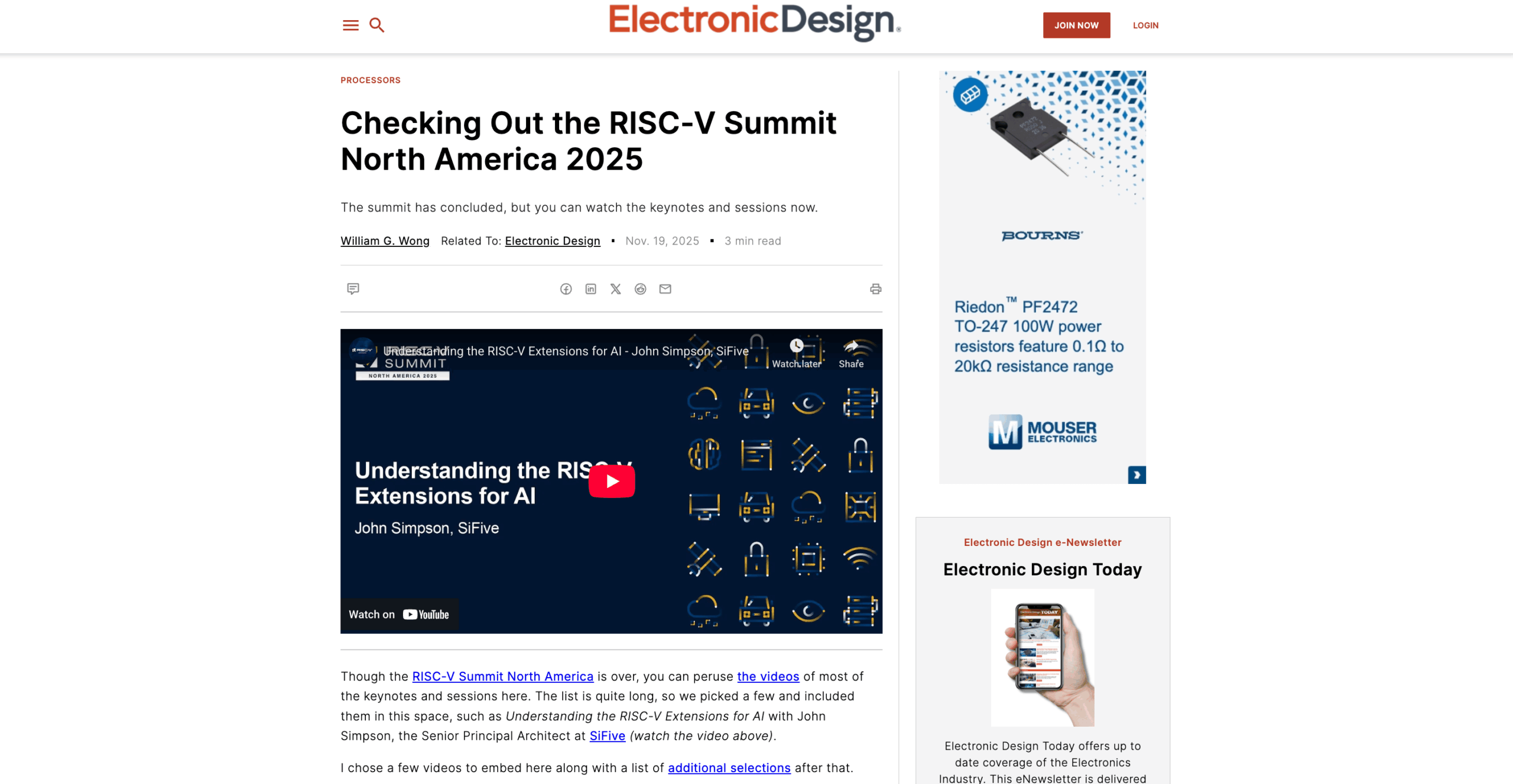Thank You For Attending RISC-V Summit North America! | Missed the event? Watch Now.
 In the Media
ChannelLife: Edge AI, security & RISC-V to redefine IoT chips by 2026
In the Media
ChannelLife: Edge AI, security & RISC-V to redefine IoT chips by 2026
 In the Media
Electronic Design: Checking Out the RISC-V Summit North America 2025
In the Media
Electronic Design: Checking Out the RISC-V Summit North America 2025
 In the Media
Semiconductor Engineering: Why Openness Matters For AI At The Edge
In the Media
Semiconductor Engineering: Why Openness Matters For AI At The Edge
Copyright © RISC-V International®. All rights reserved. RISC-V, RISC-V International, and the RISC-V logos are trademarks of RISC-V International.
For trademark usage guidelines, please see our Brand Guidelines and Privacy Policy. Code of Conduct Policy. Antitrust Policy.